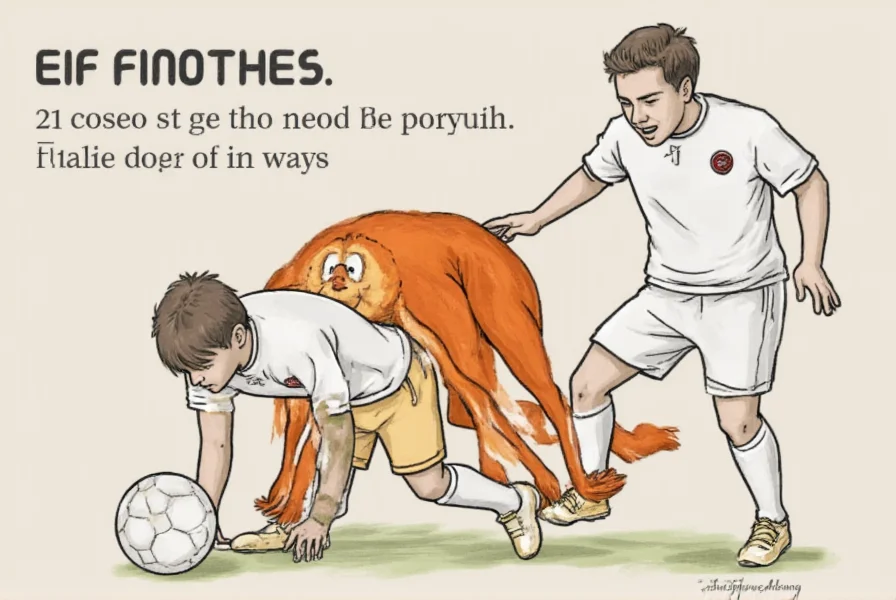Nutmegging meaning extends beyond just the physical act—it represents a psychological victory over an opponent. When executed successfully, this move not only bypasses a defender but also delivers a subtle humiliation, making it one of football's most celebrated skills. Professional players like Neymar, Lionel Messi, and Ronaldinho have elevated nutmegging to an art form, incorporating it seamlessly into their playing style.
Origin of the Term 'Nutmeg'
The etymology of "nutmeg" in football context traces back to 19th century England. Several theories exist about its origin, but the most widely accepted explanation connects to the spice trade. During the Victorian era, unscrupulous merchants would sometimes substitute valuable nutmeg with inferior fillers while selling to unsuspecting customers. Being "nutmegged" thus came to mean being tricked or deceived—a perfect metaphor for the football move where a player is fooled by having the ball passed between their legs.
How Nutmegging Works in Modern Football
Executing a successful nutmeg requires precise timing, ball control, and awareness of the defender's positioning. Players typically approach an opponent at speed, then at the last moment, push the ball through the gap between the defender's legs. The move works best when the defender is committed to a tackle, creating the necessary opening.
| Key Elements of Effective Nutmegging | Description |
|---|---|
| Body Positioning | Misdirection through shoulder feints creates the opening |
| Ball Placement | Perfectly timed touch through defender's legs |
| Follow-through | Immediate acceleration after the move |
| Risk Assessment | Knowing when the move is tactically appropriate |
While seemingly simple, mastering nutmegging requires understanding when to deploy it. In professional football, players don't attempt nutmegs indiscriminately—they use them strategically when the situation favors success. Overusing this move can lead to turnovers, so elite players incorporate it as just one tool among many in their dribbling arsenal.
Cultural Significance Across Football Regions
The term "nutmeg" is predominantly used in British English football terminology. However, different regions have their own names for the same move:
- "Panna" in Dutch and South American football culture
- "Pipe" in Australian rules football
- "En隧" (En suì) in Chinese football terminology
- "Tunnel" in German-speaking countries
The global popularity of nutmegging has led to dedicated "panna" tournaments where players compete specifically in tight spaces designed to maximize nutmeg opportunities. These events highlight how what began as a simple football move has evolved into its own subculture within the sport.
Strategic Value Beyond the Showmanship
While often celebrated for its showy nature, nutmegging serves legitimate tactical purposes in football. When executed at the right moment, it can:
- Break defensive lines that might otherwise require multiple passes to penetrate
- Create space for through-balls or shooting opportunities
- Disrupt an opponent's defensive rhythm and confidence
- Provide psychological momentum for the attacking team
Top coaches like Pep Guardiola and Jurgen Klopp don't discourage nutmegging when it occurs naturally within the flow of play, recognizing its potential to unlock tightly organized defenses. However, they emphasize that it should never be forced purely for showmanship.
Learning to Nutmeg: Practical Tips for Players
For developing players interested in adding nutmegging to their skillset, experts recommend:
- Start with stationary practice—rolling the ball through stationary objects
- Progress to slow-motion drills with a cooperative partner
- Practice in small-sided games where space is limited
- Focus on body positioning and misdirection before the actual move
- Learn to recognize defender positioning that creates natural opportunities
Professional football academies now incorporate specific nutmeg training into their dribbling curricula, recognizing its value in developing close control and decision-making under pressure.
When Nutmegging Backfires
Despite its appeal, unsuccessful nutmeg attempts can prove costly. When a player tries and fails to nutmeg an opponent, they often lose possession as their momentum carries them past the ball. Top defenders have learned to anticipate common nutmeg attempts and will sometimes deliberately open their legs as a trap.
The most effective players use nutmegging as just one option among many—they don't become predictable by overusing it. As football analyst Gary Lineker notes, "The best nutmegs happen when the player doesn't even seem to be trying—they're just a natural consequence of excellent close control and timing."
Evolution of Nutmegging in Professional Football
While nutmegging has existed since football's early days, its prominence has grown with the sport's increasing speed and technical demands. Modern players face defenders who are faster and more tactically aware than ever before, making successful nutmegs increasingly impressive.
Video analysis shows that in top European leagues, successful nutmegs occur approximately 3-5 times per match on average, with creative midfielders and wingers attempting them most frequently. The move has become so integral to football culture that major tournaments now feature "nutmeg leaderboards" alongside traditional statistics like goals and assists.











 浙公网安备
33010002000092号
浙公网安备
33010002000092号 浙B2-20120091-4
浙B2-20120091-4